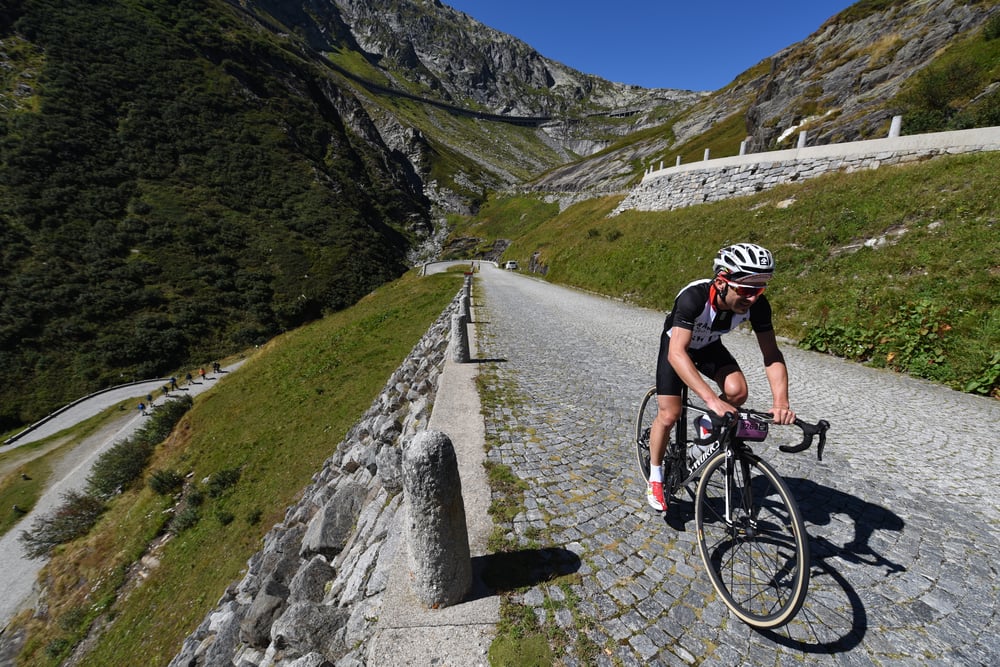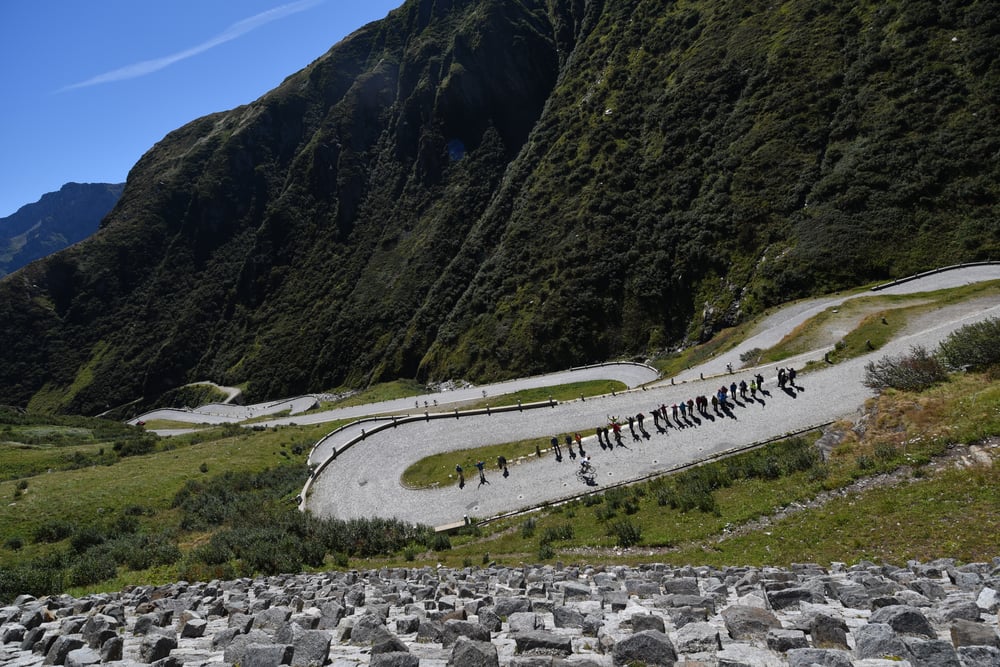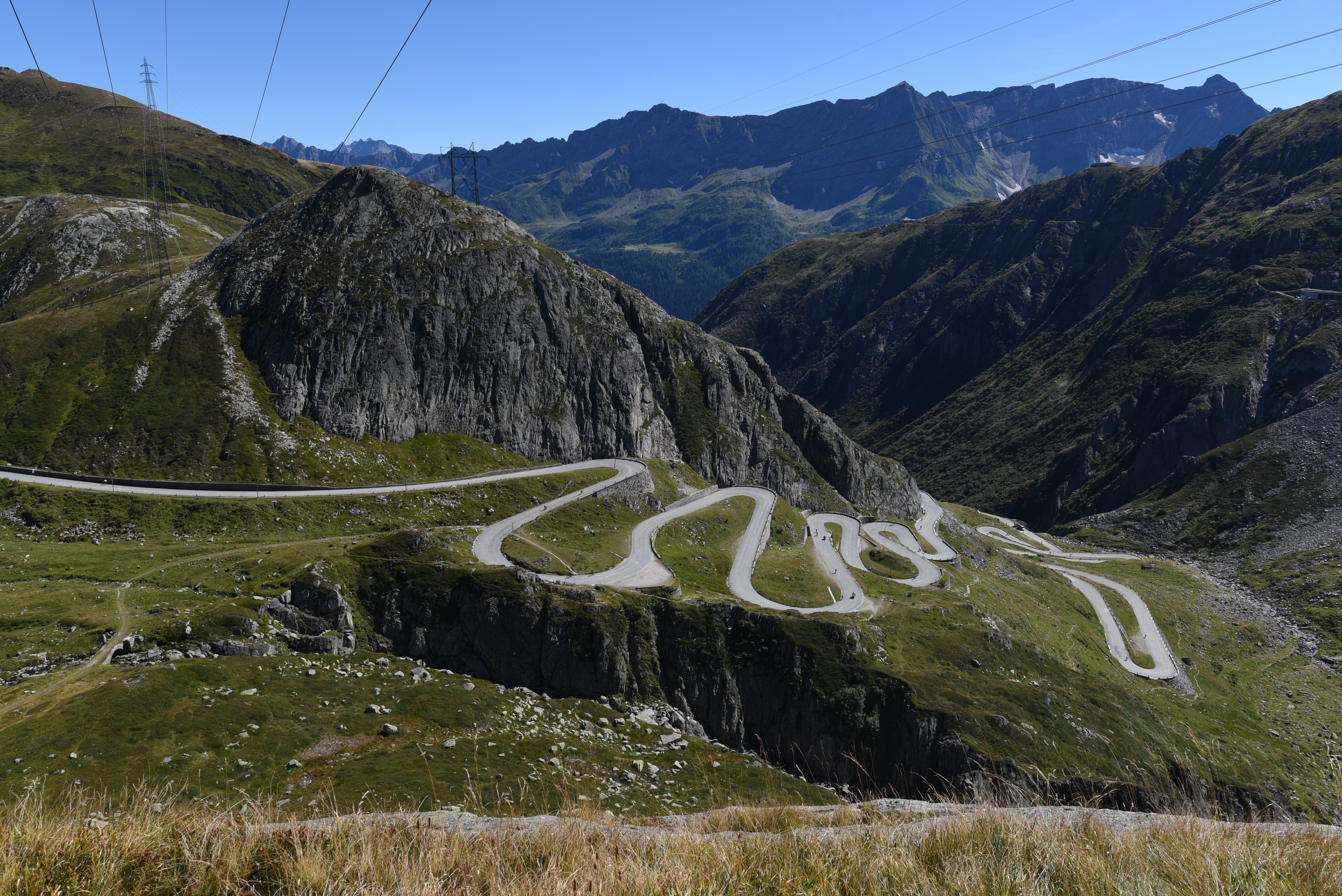It’s no secret that the Swiss alps don’t enjoy the same high profile cycling glory of their French and Italian counterparts. In fact, very few of the country’s epic alpine cols and summits would show up on the internet’s infinite lists of the best climbs in the world, alongside the likes of Ventoux, Galibier and Stelvio. But they should.
Words: Ashleigh Maxwell
Flying under the radar for many cyclists, Switzerland’s smooth tarmac and incredible landscapes make up some of the best roads in the world. Shrouded in history, and at the top of the list, is the legendary St. Gotthard Pass.
The legendary St Gotthard Pass
Topping out at 2106m, the immense Gotthard mastiff is intimidating, and was so even for the Romans. With the seemingly insurmountable Schöllenen Ravine to the north of the pass, Julius Caesar bypassed the col for other easier passes. It wasn’t until the year 1200 when the gorge was finally developed, that the area gained notoriety. In the centuries since, the Gotthard region has become one of the country’s most important logistical links, as well as the meeting-point of Switzerland’s four linguistic regions, plus the source of great rivers like the Rhine, Rhone, Reuss and Ticino. So it’s kind of a big deal.
"The first road over the Gotthard Pass was opened in 1830, replacing the mule track used by traders of old."
The first road over the Gotthard Pass (Passo del San Gottardo in Italian or Gotthardpass in German) was opened in 1830, replacing the mule track used by traders of old. Today the Tremola road, winding its way north from Airolo to the Gotthard, is still intact and is considered Switzerland’s longest historical road monument.

"What truly sets the Tremola apart is its ancient cobbles, with granite stones dating back to the early 1800s."
While it’s possible to approach the col from Hospental, the best climb comes on the Tremola from the Airolo side, which makes an excellent follow up to the nearby Nufenen Pass, the second highest paved pass in Switzerland at 2,478m.
Cobbled, steep and stunning, the ancient Tremola has become a legendary climb for cyclists in Switzerland, thanks in part to the new tunnels and roads funnelling traffic around the original switchbacks and leaving the best route for bikes and horse-drawn carriages.
What truly sets the Tremola apart is its ancient cobbles, with granite stones dating back to the early 1800s. But rest assured, this surface is not like the cobbled roads of northern France, instead made up largely of remarkably smooth stones.

"The serpentine road never gets excessively steep and the cobbles are a truly unique experience."
Situated on the southern side of the formidable pass, the 24 hairpin bends that make up the Tremola create a startling contrast against the wild alpine landscape. The impressive pass has featured on the Tour De Suisse and was also visited by the Haute Route in 2016, cementing the historic road’s reputation as the bucket list climb in Switzerland.
In just under 13km, the Tremola climbs 932m from Airolo at an average gradient of 7.3%. The serpentine road never gets excessively steep and the cobbles are a truly unique experience. Topping out at a maximum of 12% on the ride to 2091m, rarely do roads blend such rich history with a unique, challenging and genuinely enjoyable biking experience. Cycling in the alps does not get any better than this mythical traverse.
The Numbers: St. Gotthard Pass (from Airolo)
Distance: 12.7kmAscent: 932m
Average gradient: 7.3%
Maximum gradient: 12%
Maximum elevation: 2091m
Check out the amazing photos from St. Gotthard on Stage Two of the 2016 Haute Route Dolomites, here.







